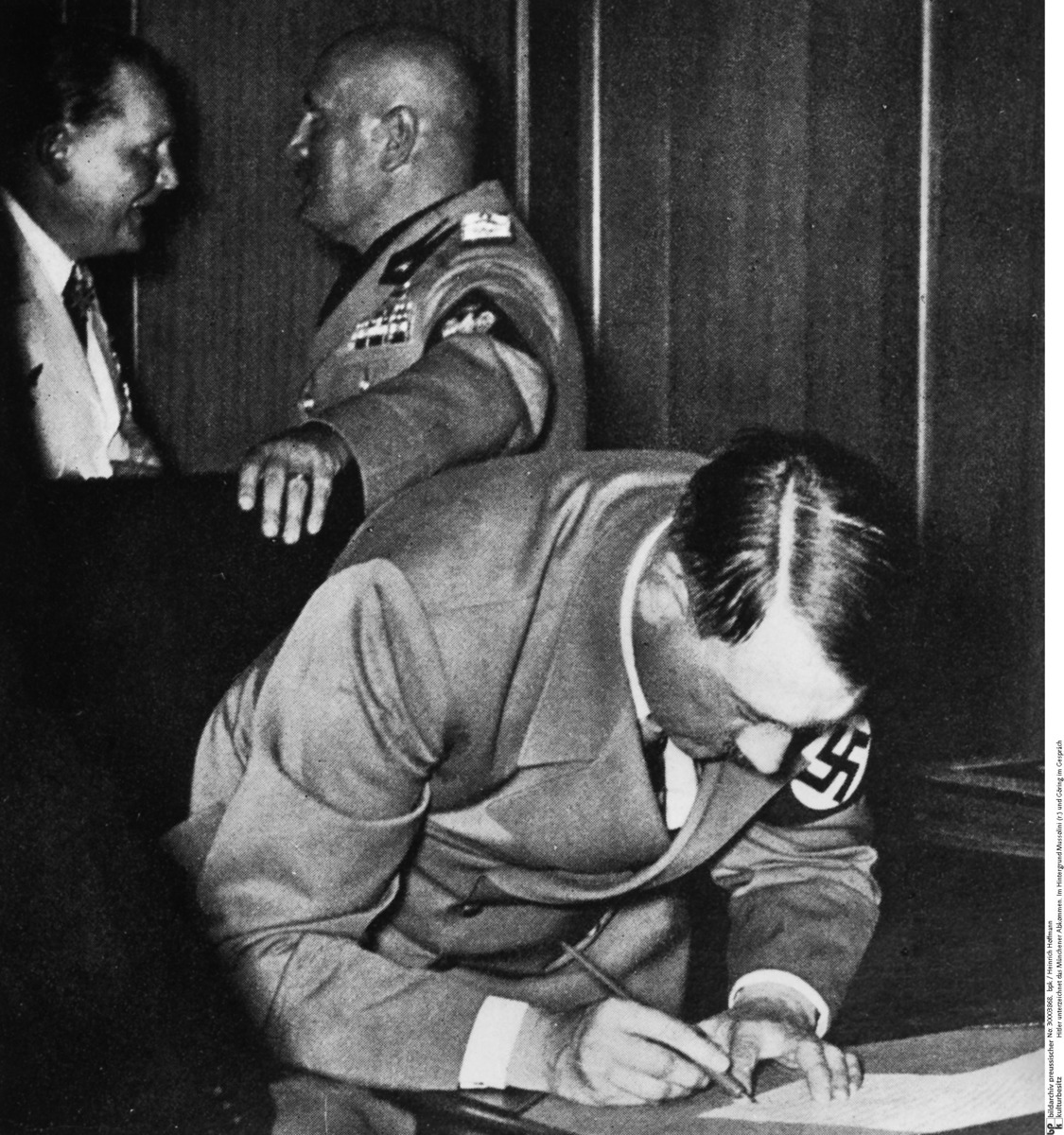Abstract
The successful “annexation” of Austria in March 1938 convinced Hitler
that the time had come for the invasion of Czechoslovakia that he had
been planning for the past year. While military preparations for the
planned October 1, 1938, attack were proceeding, Hitler staged the
so-called Sudeten Crisis. Acting on his instructions, the Sudeten German
Party agitated for autonomy and reparations from the Czechoslovak
government, which was accused, in a massive slander campaign, of
terrorizing and oppressing the approximately three million German
Sudetens. Although the Nazi regime left no doubt as to its aggressive
intentions, the British government in particular hoped to prevent a
European war through negotiations. But Hitler’s goal was not to arrive
at a compromise, as British Prime Minister Neville Chamberlain
discovered over the course of numerous negotiation sessions in September
1938. Every time Chamberlain made a concession, Hitler increased his
demands. Only when war seemed inevitable did Hitler surprise Chamberlain
by backing down and agreeing to a conference between German, French, and
British government leaders to be organized by Göring and chaired by
Mussolini. After thirteen hours of negotiations, these leaders signed
the so-called Munich Agreement on September 30, 1938. The agreement
called for five Sudeten German zones to be ceded to the German Reich.
The Czechoslovak government was not allowed to participate in these
negotiations. On October 1, 1938, German troops followed by the Gestapo
and the SD [Sicherheitsdienst]
marched into the area annexed as the “Sudetenland District.”
